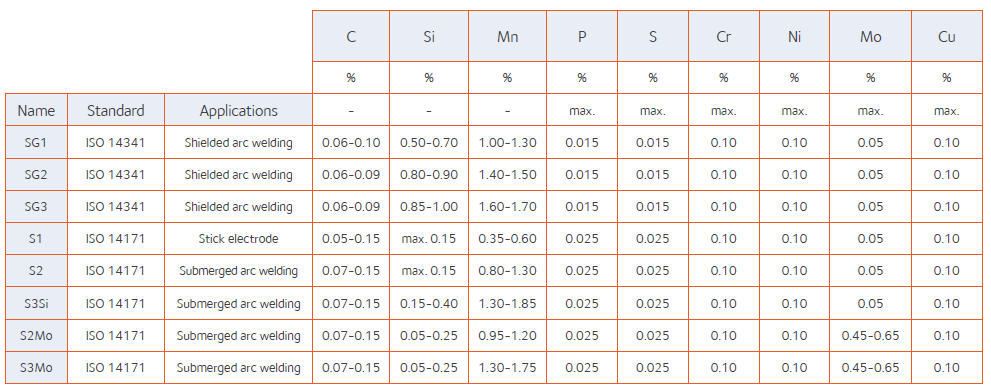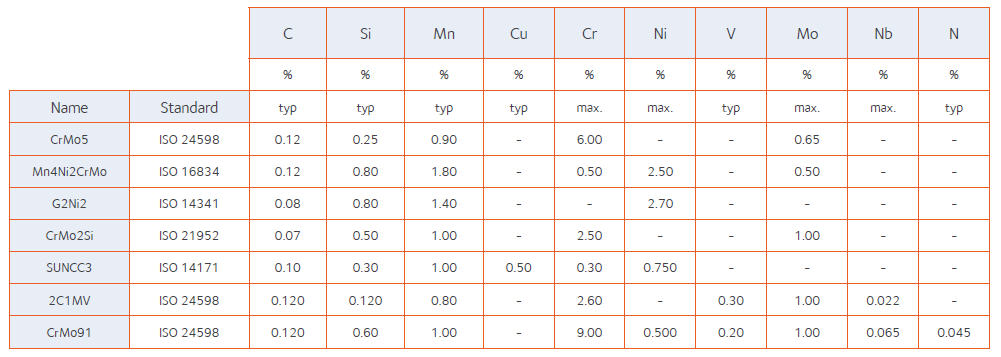Steel welding grades are developed to guarantee coherent chemical and mechanical properties between the welded joint and the base metal.
The grade analysis is a determining factor, especially
- in obtaining the required mechanical properties: carbon, manganese and alloying elements such as vanadium or niobium;
- for toughness or corrosion resistance: nickel, chromium or molybdenum;
- depending on the welding process and on protection used (shielding gas or flux): carbon, silicon, aluminium or titanium to limit the risk of welded joint oxidation;
- residual content such as copper, chromium and tin are tightly controlled to avoid cracks, as are phosphorus, sulphur and hydrogen;
- special processes have been developed to achieve
a. ultra-low levels of residuals such as lead, bismuth
b. alloyed grades with up to 9% chromium, nickel, molybdenum…
All these metallurgical considerations explain the diversity of grades available for welding and which can only be partially covered by international standards.



